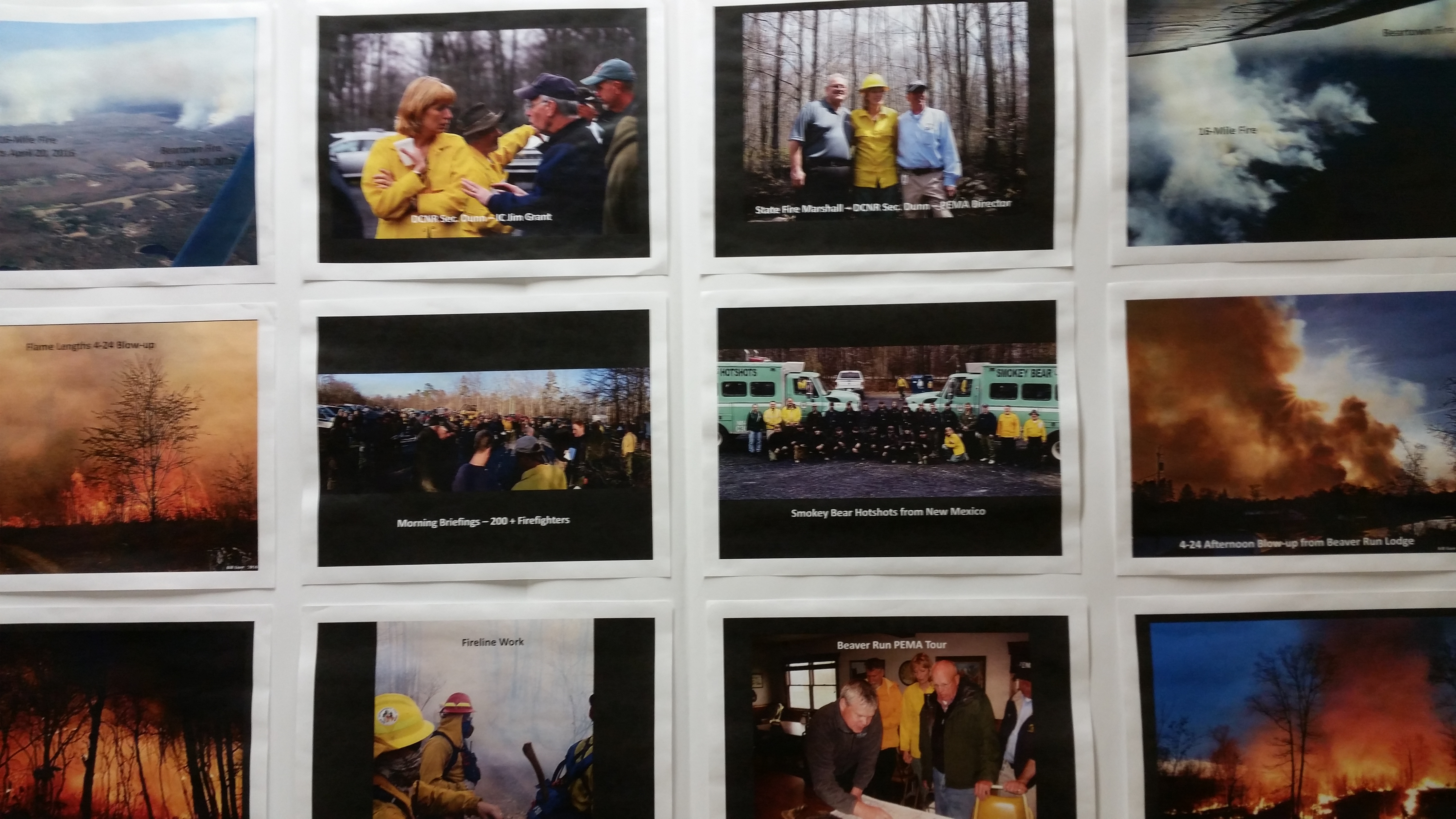
CLEARFIELD – Forest Fire Wardens throughout the Moshannon State Forest are gearing up for wildfire season.
Fire Wardens from across the area gathered Tuesday night for the Forest Fire Warden’s Training Banquet.
According to information provided by the Pennsylvania Bureau of Forestry and the Department of Conservation & Natural Resources, forest fire wardens have been engaging in forest fire protection for 102 years.
Pennsylvania has one of the oldest volunteer fire warden programs in the country. Locally, forest fire wardens are appointed to suppress and investigate wildfires and to engage in fire prevention programs.
Fire wardens also have the authority to train others to assist in extinguishing forest fires. They are also responsible for investigating the cause of wildfires and other pertinent information and to submit the necessary documentation to the Chief Forest Fire Warden.
One of the most important functions of a forest fire warden is to participate in fire prevention programs.
At Tuesday’s banquet, Wardens Shawna Thomas, Mike Mayersky, Robert Prior, Jason Sunderland, Terry Collins Sr., Timothy Sharpless, Michael McCracken, Sheldon Sharpless, Kenneth Barns, Larry Long and Nancy Fetters were recognized for the programs they conducted through Wardens Helping in Prevention (WHIP).
Speakers for the evening were Fire Forester Joe Polaski, who stressed the importance of safety and preparation going into a wildfire suppression operation. He said it was vital to take time to develop a safe plan of attack and to take care of the members of the crew.
Polaski also thanked the wardens for their timely reporting of wildfire incidents. The information provided by the local wardens is added to the state-wide reporting system. This information helps officials on the state levels compare data.
Prescribed Fire Specialist Todd Breininger discussed the devastating wildfires that occurred in Gaitlinburg, Tenn., in November. The fire left 14 people dead and burned thousands of acres. The fire broke out near a major hiking trail and was driven by high winds and extremely dry conditions. Two juveniles have been arrested and charged with starting the fire.
Breininger said a very similar situation occurred April 20-25 in Barrett Township, Pa., near the Poconos. On April 20, four separate fires broke out in an area that was heavy with trees that had been defoliated by gypsy moths.
The winter snow had been light and the area saw very little spring rain. The four smaller fires joined together to form two large fires. The two larger fires then joined together again to become the 16 Mile Fire, the worst forest fire Pennsylvania had experienced in 25 years. All five air-tanker planes in the state had to be used to try to suppress the fire.
Breininger said the fuel type, terrain and weather conditions at the 16 Mile Fire were almost identical to the situation in Tennessee. Crews fighting the fire had to contend with sustained winds and dry conditions.
By April 24, the fire had grown so large, it was declared a Type 2 incident, and for the very first time, a Hot Shot crew was sent to Pennsylvania.
Breininger said the Smokey Bear Hotshots from New Mexico had been deployed to another state and still had a week left on their deployment. When the 16 Mile Fire continued to grow, the crew was diverted to Pennsylvania.
Luckily, on April 25, the weather turned and conditions improved, which allowed the crews to finally contain the fire. During that time, five structures and 11 out-buildings were burned, but no lives were lost.
Breininger said the 16 Mile Fire is an example of how important wildfire prevention is to this area. He said because Pennsylvania does not get a lot of big wildfires that occur in the western United States, the residents tend to grow complacent.
He said it’s important for fire wardens to spread the word about wildfire prevention and to create a more fire-conscious community.
Breininger said the four initial fires, which created the 16 Mile Fire, are believed to have been started by arson, and there is a $3,000 reward for information, which may lead to the capture of the person or persons responsible for the fire.
For the 2016 wildfire season, the Moshannon Forest District saw 68 wildfires, which burned 185 acres.
Statewide, there were 835 wildfires reported, which burned 12,190 acres. Nationally, 67,743 wildfires were reported that burned 5,509,995 acres.
So far in 2017, there have been nine wildfires in the Moshannon Forest District, which have burned 35 acres.
Also at the meeting, the wardens received awards for their years of service. The award winners are as follows:
60 years: Robert Radomski; 55 years: Homer S. Cowder; 50 years: Donald E. Foster; 40 years: Alex W. Reinke and Norman W. Bean; 30 years: Ronald A. Woodling, William T. Harvey, Michael S. Steinkamp and Daniel E. Livergood; 25 years: Nancy K. Fetters; 20 years: Douglas J. Zaworsky, Michael J. Mayersky, Harlan E. Owens and John P. Heckler Jr.; 15 years: Bryce Boyer, Jared D. Potter, Wayne D. Emigh and Edward W. Brown Jr.; and 10 years: Stacey R. Flick, Barry L. Wagner, Larry R. Bickel, Charles L. Livergood and Harry Robbins.


